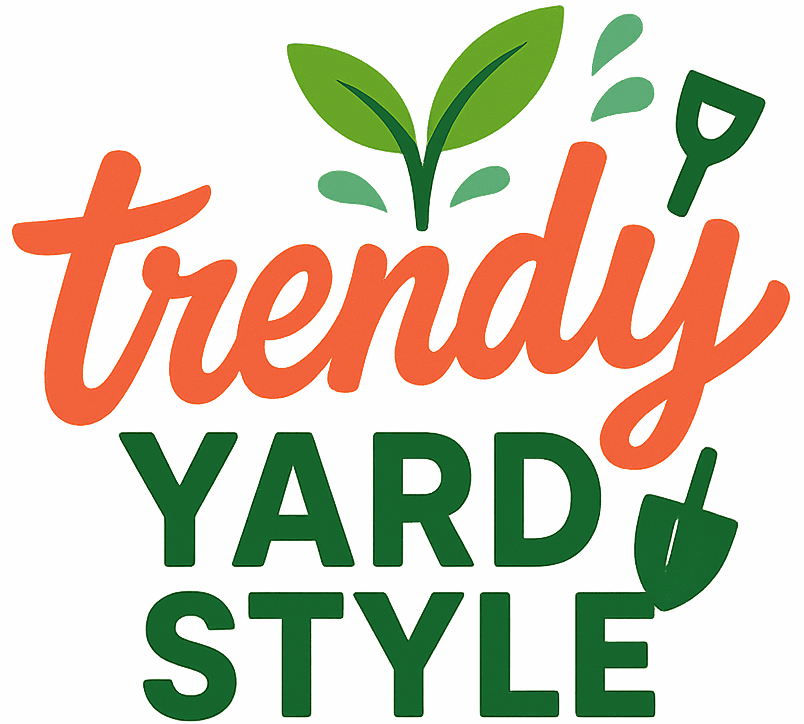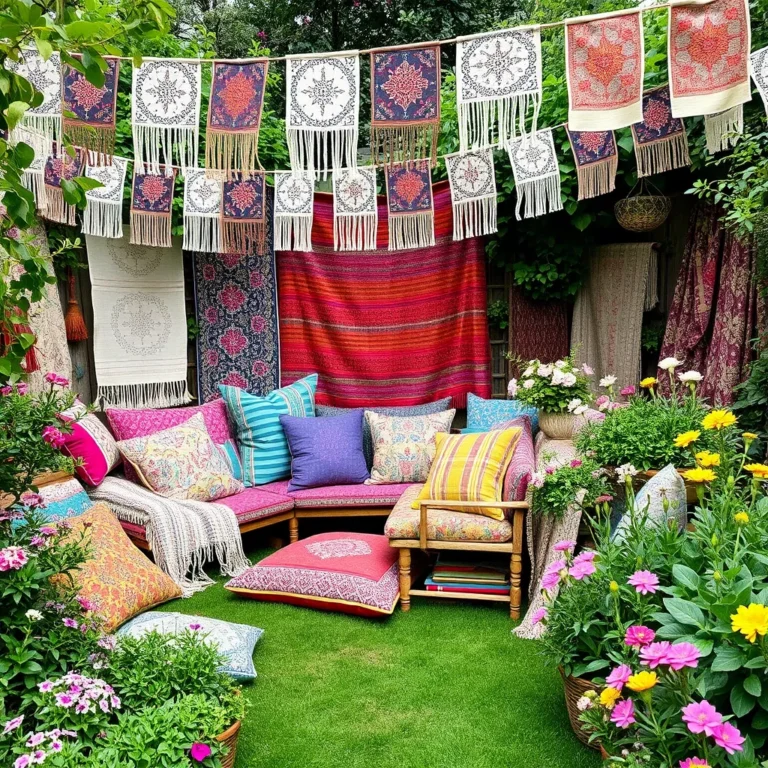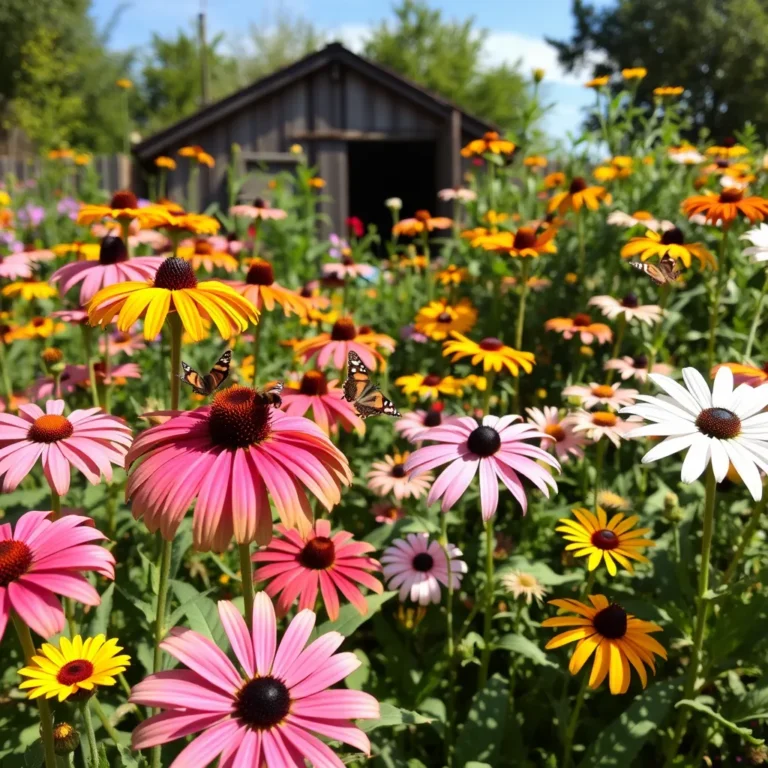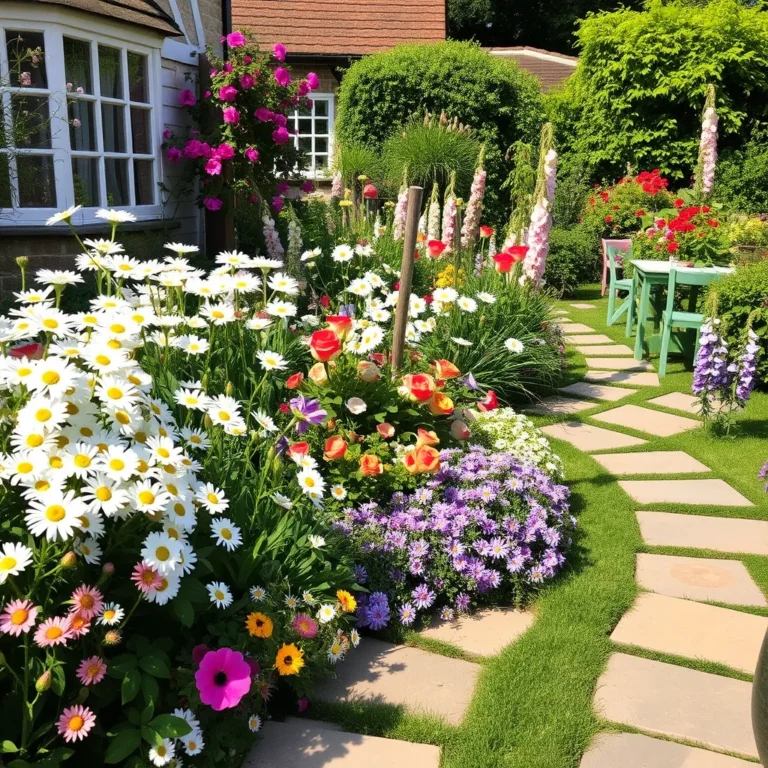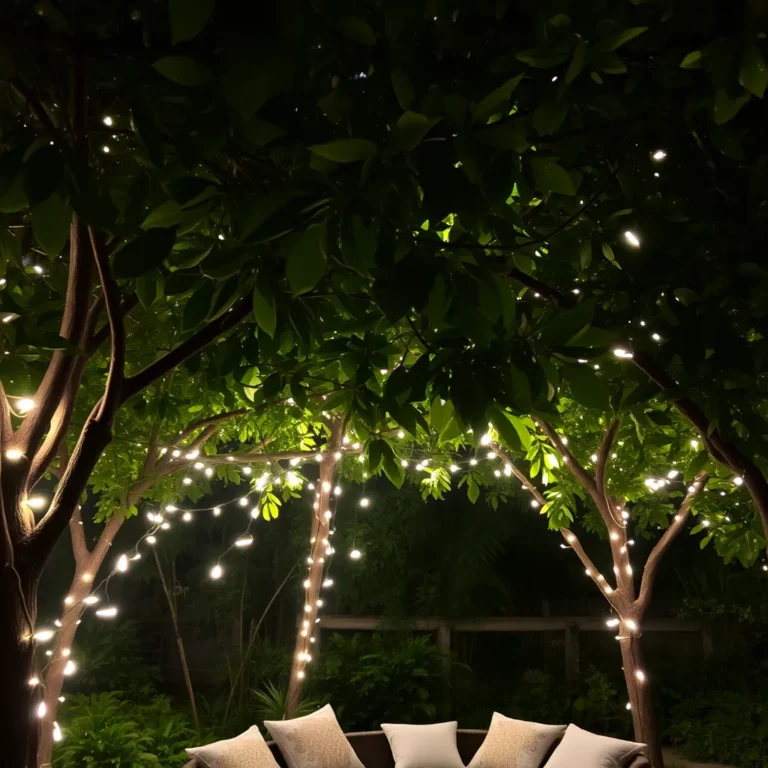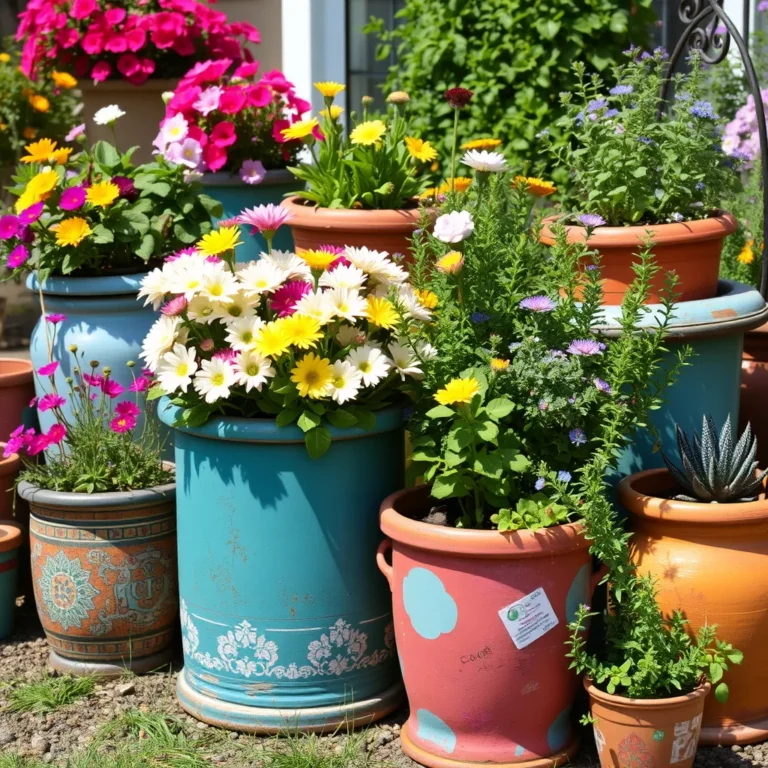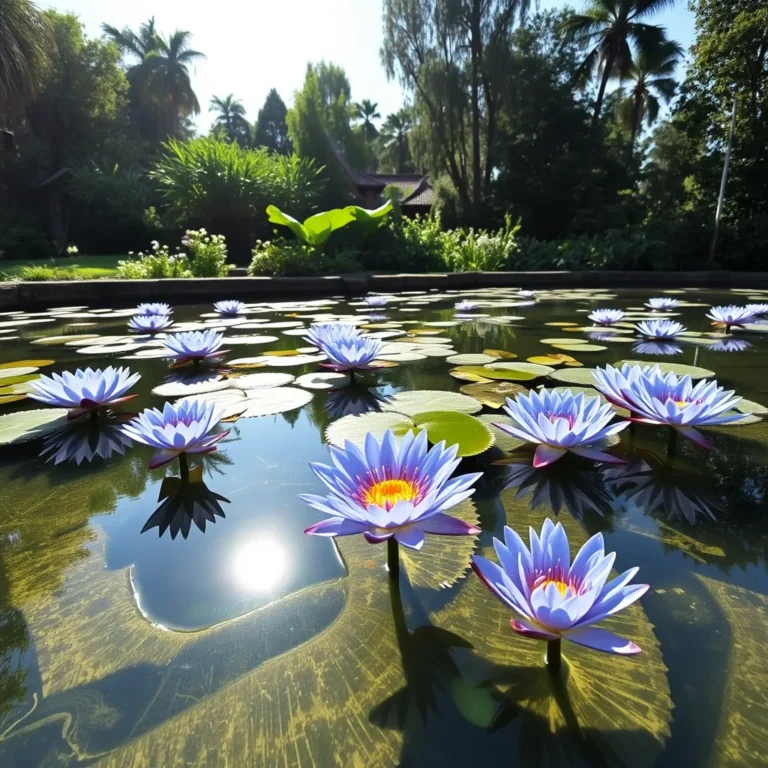8 Creative Flower Garden Ideas You Can Copy Now
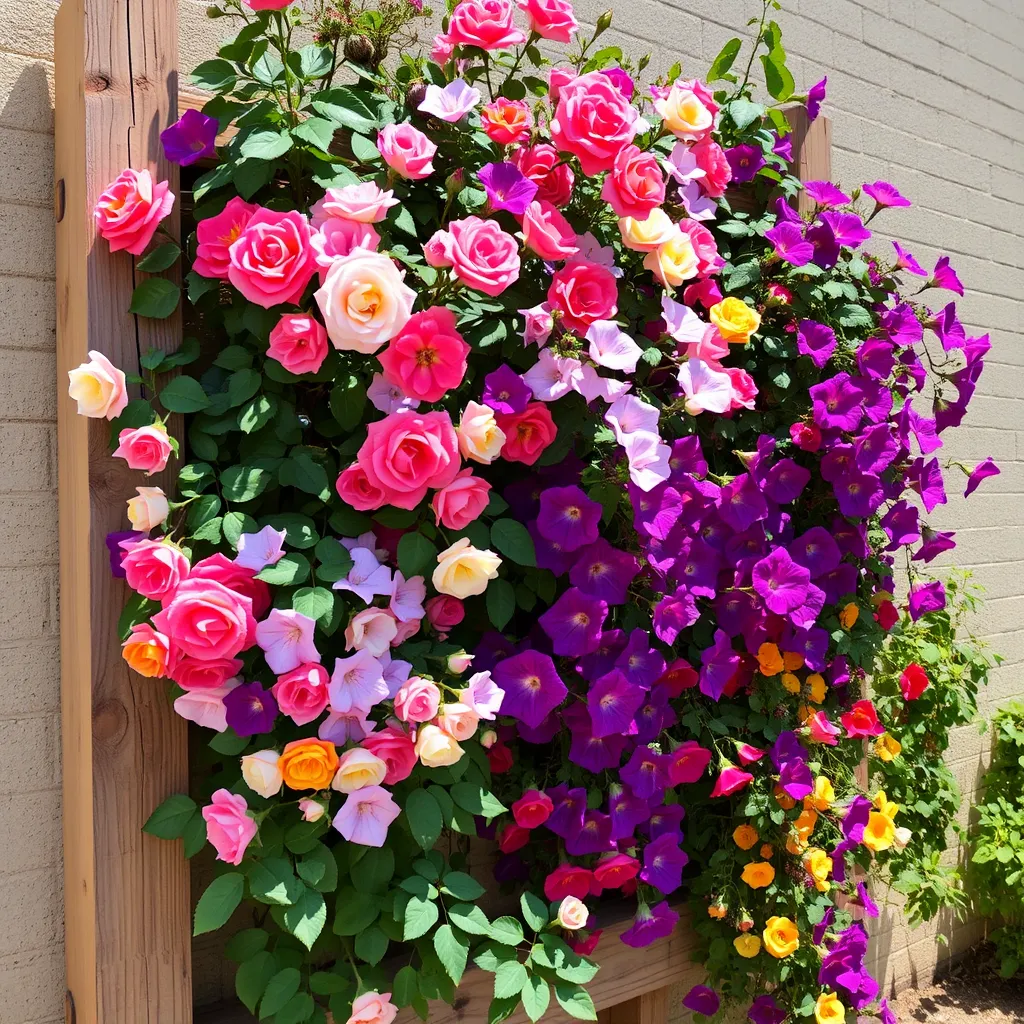
Are you ready to transform your yard into a stunning flower paradise? In this post, I’ll share eight creative flower garden ideas you can copy right now! Whether you have a small space or a big backyard, these tips will inspire you to create beauty that blooms all year long. Let’s explore fun and unique ways to bring color, fragrance, and life to your home!
Vertical Garden: Transforming Small Spaces with Vertical Blooms

Vertical gardening helps you use space wisely. You can grow flowers up, not just out. This makes it great for small yards or balconies.
Benefits of vertical gardening
– Saves space
– Adds beauty to walls
– Creates privacy
– Reduces weeds
Best flowers for vertical arrangements
– Climbing roses
– Morning glories
– Sweet peas
– Petunias
– Nasturtiums
Step-by-step setup guide
1. Choose your wall or fence.
2. Decide on a vertical garden system. Options include trellises, pockets, or grids.
3. Prepare the area. Make sure it gets enough sun.
4. Select your flowers. Pick ones that grow well together.
5. Plant your flowers according to the system.
6. Water regularly and check for pests.
7. Enjoy your beautiful vertical garden!
Pollinator Garden: Attracting Bees and Butterflies

What flowers attract bees and butterflies?
Choose flowers like coneflowers, sunflowers, and lavender. These blooms attract many pollinators. Other great choices include zinnias, asters, and milkweed. Aim for a mix of colors and shapes. This helps draw in different types of bees and butterflies.
How should I layout my pollinator garden?
Place flowers in clusters. This makes it easier for bees and butterflies to find them. Use a mix of heights to create layers. Tall flowers can go at the back, with shorter ones in front. Leave some open spaces for flying insects. A sunny spot is ideal, as most pollinators love warmth.
What maintenance does a pollinator garden need?
Water your plants well, especially in dry spells. Avoid pesticides, as they can harm pollinators. Mulch around your flowers to keep the soil moist. Regularly check for weeds, as they can compete for nutrients. Lastly, deadhead spent blooms to encourage more flowers. This keeps your garden vibrant and buzzing with life!
Container Gardens: Portable Flower Displays for Any Space

Container gardens are great for any space. You can create them on a patio, balcony, or even indoors. They are easy to move and can fit in any area. Here’s how to start your own container garden.
Choosing the right containers and soil
When picking containers, choose ones with holes at the bottom. This helps with drainage. You can use clay pots, plastic pots, or even wooden boxes. Each type has its charm. Next, use good potting soil. Look for soil that drains well but holds moisture. This keeps your flowers healthy.
Top flowers for container gardening
Some great flowers for containers include:
– Petunias
– Marigolds
– Geraniums
– Impatiens
– Begonias
– Snapdragons
These flowers bloom well in pots. They add color and life to your space. Mix different colors and types for a vibrant look.
Creative arrangements and design ideas
Think about how to arrange your flowers. Place taller flowers in the back and shorter ones in front. You can also group flowers by color. For a fun twist, add herbs like basil or mint. They smell good and are useful for cooking. Be creative with container shapes, too. Use old wheelbarrows or wooden crates for a unique touch. Let your imagination guide you!
Cottage Garden: Embracing a Charming, Informal Style

Cottage gardens are cozy and full of life. They mix flowers, herbs, and veggies. This style feels natural and relaxed. You can create a happy space bursting with color.
Characteristics of cottage gardens
Cottage gardens are known for their wild look. They often have:
– A mix of flowers and plants.
– Paths made of stones or gravel.
– A variety of heights and shapes.
This style is all about being simple and fun. You want plants that look good together, even if they are different.
Flower combinations for a vibrant look
To make your cottage garden pop, use flowers like:
– Delphiniums
– Foxgloves
– Marigolds
These flowers bring bright colors and charm. Mix tall and short plants for depth. Add some herbs like mint or basil for extra life.
Planting tips for a lush and diverse garden
When planting, space your flowers well. This helps them grow. Use rich soil for strong roots. Water them regularly but don’t drown them. You want happy plants that thrive.
With a cottage garden, you can enjoy nature’s beauty right at home.
Scented Flower Garden: Creating a Fragrant Retreat

What are the best aromatic flowers to include?
You can start with lavender, roses, and jasmine. These flowers smell great and look lovely. Add peonies and gardenias for unique scents.
How do you arrange flowers for sensory impact?
Place taller flowers like delphiniums at the back. Use shorter flowers like violets in the front. Group flowers by color and scent. This draws the eye and nose.
What maintenance is needed for long-lasting scents?
Water your flowers regularly but do not overwater. Deadhead blooms to keep them fresh. Trim back plants after they bloom. This helps them grow back stronger and smell better.
Drought-Resistant Garden: Flourishing with Less Water

A drought-resistant garden saves water and looks great. You can choose flowers that need less water. Some good options are:
– Lavender
– Sedum
– Daylily
– Coneflower
– Black-eyed Susan
These flowers are tough and thrive in dry soil.
Next, think about your layout. Group plants with similar water needs. This helps you water less. Create clusters of flowers for a full look. Use paths to separate sections. This makes your garden easy to care for.
Soil is key for keeping moisture. Use sandy or loamy soil. These types drain well. Add organic matter like compost. This helps your plants grow strong roots.
Mulching is also vital. Apply a thick layer of mulch around your plants. It keeps soil moist and cool. Use wood chips, straw, or leaves. This simple step saves water and time.
With these tips, your drought-resistant garden will thrive and stay beautiful.
Themed Garden: Unique Concepts for Personal Touch

What is a themed garden? It is a garden that reflects your style. You can pick a color scheme or cultural theme. Some ideas include a rainbow garden or a Japanese zen garden.
When you plan your garden, keep it cohesive. Choose flowers that match your theme. For a rainbow garden, use flowers in every color. For a zen garden, choose calm, soft colors.
To find the right plants, research local nurseries. Ask for flowers that fit your theme. You can also look online for specific plants. Make a list of plants to look for.
Mix tall and short flowers for depth. Place taller flowers in the back. This way, you see all the blooms. Group plants by color for a more striking look.
Don’t forget to add features like rocks or paths. These can enhance your theme. A small pond works well in a zen garden. A stone path adds charm to a cottage theme.
Creating a themed garden allows you to express yourself. Enjoy the process and make it personal!
Seasonal Flower Garden: Year-Round Blooms

To create a seasonal flower garden, focus on flowers that bloom at different times. Choose early bloomers like crocuses and daffodils. In summer, add sunflowers and zinnias. For fall, plant asters and chrysanthemums. This way, your garden stays colorful year-round.
Next, rotate your plants for seasonal interest. After spring blooms fade, replace them with summer flowers. As summer ends, switch to fall varieties. This keeps your garden fresh and exciting.
Finally, plan maintenance activities throughout the year. In spring, clear old mulch and weeds. Water your plants regularly in summer. In fall, cut back spent flowers and prepare for winter. This care ensures your garden thrives all year.
Conclusion
Vertical gardens, pollinator spots, and themed spaces can all change your environment. Each section shows how to use flowers to enhance small areas. Focus on the right plants and smart design to boost beauty and attract wildlife. This journey into gardening will inspire creativity. Planting can be fun and rewarding. Use these tips to create blooms that suit your space and style, turning your garden into a lively retreat.
